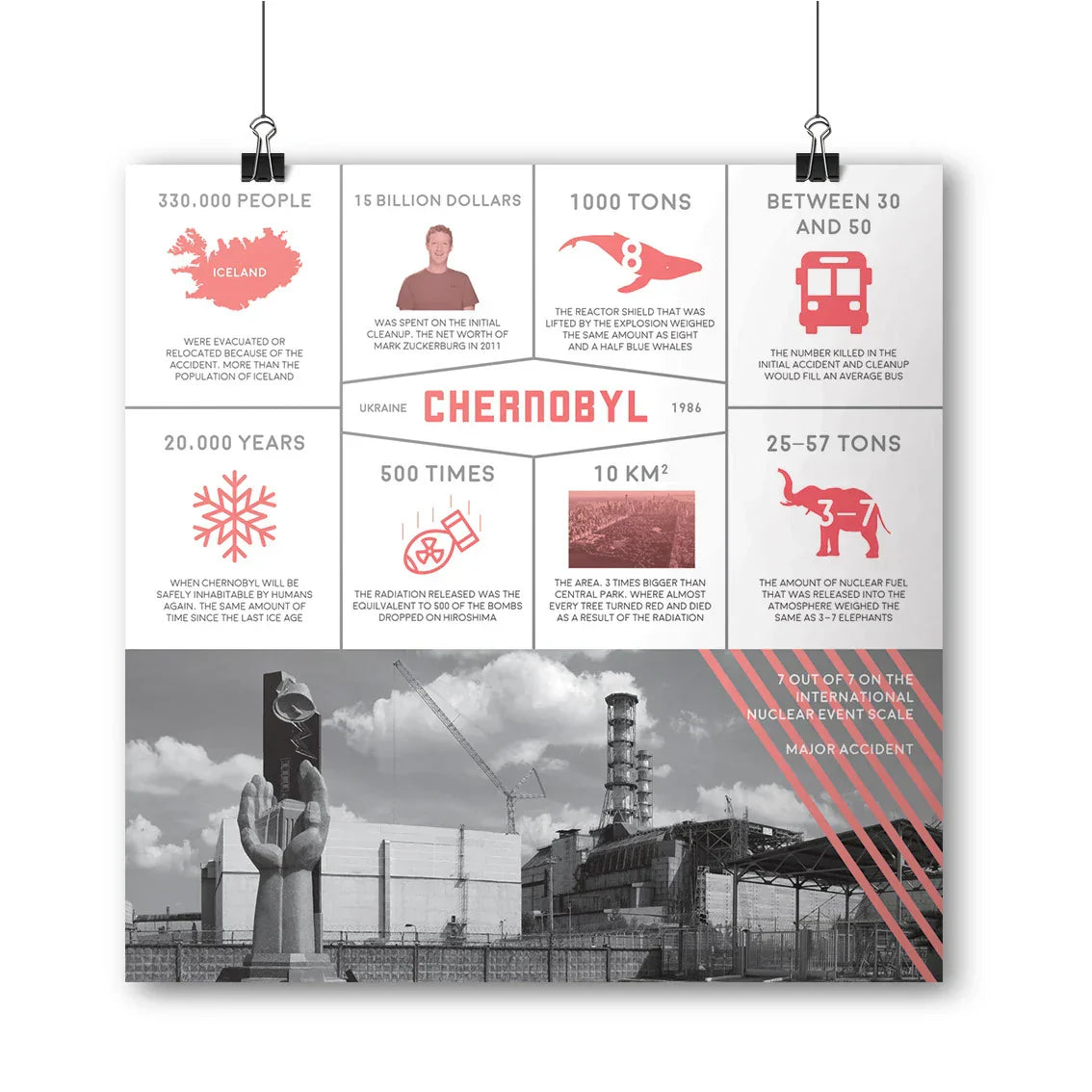Home
/
LEARN TO SURVIVE
/
Lessons from Chernobyl and Fukushima – Are You Ready for a Nuclear Accident?

Lessons from Chernobyl and Fukushima – Are You Ready for a Nuclear Accident?
Introduction: Historical Catastrophes, Modern Warnings
The world’s two worst nuclear accidents—Chernobyl (1986) and Fukushima (2011)—left an indelible mark on global consciousness. They exposed deep failures in engineering, governance, and emergency response. But more importantly, they taught us critical lessons about preparedness and resilience in an uncertain world. In 2025, those lessons still resonate—and your readiness matters.
1. What Went Wrong: Key Failures & Lessons
Chernobyl: Reactor Design & Information Control
-
The RBMK‑1000 reactor had design flaws that made it unstable under certain conditions.
-
Operators lacked adequate training and ignored procedural safeguards.
-
There was significant secrecy: delayed evacuations, misinformation, and suppressed data, aggravating public exposure and long-term fallout admin.
Post‑Chernobyl reforms included improved reactor safety, regular preparedness drills, and mandatory public information dissemination Nuclear Energy Agency (NEA).
Fukushima: Natural Disasters & Bureaucratic Paralysis
-
A massive earthquake and tsunami knocked out power and cooling systems, triggering meltdowns and hydrogen explosions at Fukushima Daiichi The New Yorker.
-
The response was delayed: managers lacked nuclear expertise, regulators were not independent, and a rigid hierarchy slowed urgent decisions bankwatch.org.
-
Dosimeters and safety gear were unavailable; dose limits were imposed or reimposed too strictly, delaying response thebulletin.org.
2. Core Lessons Learned
Think the Unthinkable
Operators underestimated worst-case scenarios. Risk assessments were flawed—not anticipating combined disasters like earthquake + meltdown. Today, planning must include low‑probability/high‑impact events survivalbite.com.
Cultivate Safety Culture & Independence
Regulators must be truly independent of operators or political influence. Transparent oversight must replace hierarchical delays. Public trust hinges on openness and accountability apln.network.
Plan for Dynamic Windows of Exposure
Strict dose limits helped early response but also hindered action. Guidelines should allow flexibility during emergencies—raising acceptable exposure limits to enable containment and rescue thebulletin.org.
Communicate Clearly & Involve Citizens
During Fukushima, grassroots efforts like Safecast filled gaps in official data by enabling citizen radiation monitoring. Post‑accident, citizen science helped restore trust and data transparency link.springer.com.
International Coordination & Training
Post‑Chernobyl, global conventions (IAEA, WHO) standardized emergency readiness. After Fukushima, cross-border communication, standardized drills, and multinational cooperation improved capacity worldwide thebulletin.orgapln.network.
3. Why It Matters to You Today
Even without local nuclear plants, risk isn’t hypothetical:
-
Accidents happen—from natural disasters, terrorism, or system failures.
-
Fallout drifts across borders; food, water, and power infrastructures can be disrupted.
-
Communities may face weeks of reduced services or evacuation.
Understanding nuclear risks and your own readiness is essential—not panic-inducing, but practical and empowering.
4. Reflection Themes
-
Design vs. Human Behavior: Safe systems fail without proper training and protocols.
-
Predict, Prepare, Respond: Risk isn’t static—prepare for cascading or combo disasters.
-
Transparency Saves Lives: Public trust enables smoother evacuations and compliance.
-
Citizen Empowerment Works: Local data collection strengthens response.
-
Preparedness ≠ Fear: It’s preparedness that gives peace of mind—not ignoring risk.
🔮 What Happens Next?
While global nuclear infrastructure has improved, vulnerabilities remain. Future scenarios might include:
✅ Best Case – Coordinated & Effective Response
-
Early warnings trigger evacuations within designated zones.
-
Local authorities and residents act with clear protocols.
-
International assistance and communication prevent misinformation.
-
Individuals and families are ready with emergency supplies and plans.
⚖ Mid Case – Disruptions Without Collapse
-
Localized accidents force temporary evacuations.
-
Food, water, or electricity may be interrupted.
-
Community networks and preparedness mitigate chaos.
-
Stress is manageable—but recovery is slow.
⚠ Worst Case – Systemic Breakdown
-
Severe nuclear incident triggers widespread fallout.
-
Mass displacement, infrastructure failure, panic.
-
Lack of planning or supplies causes high casualty risk.
-
Isolation and scarcity threaten survival for weeks.
🛠 What You Can Do to Prepare (Now)
Here’s how to proactively reduce risk for you and your loved ones:
-
Build or Buy a Nuclear Accident Survival Kit
-
Include: potassium iodide tablets, emergency radio, portable water filters, long-life food, radiation dosimeter, first-aid kit.
-
-
Know Shelter Protocols and Evacuation Plans
-
Identify indoor central rooms or basements for "shelter-in-place".
-
Plan evacuation routes and meeting points in case of orders.
-
-
Monitor Radiation with Confidence
-
Use a Geiger counter or dosimeter to track exposure levels.
-
Join or follow local radiation citizen networks (like Safecast).
-
-
Stay Informed & Connected
-
Keep battery-operated or solar radios ready.
-
Understand alert systems (EAS, WEA, NOAA alerts).
-
Share plans with neighbors; form a prepper community for mutual support link.springer.comNuclear Energy Agency (NEA)processsafetypro.comreddit.combusinessinsider.commodernwarriorproject.com+1.
-
-
Stock Non‑perishable Essentials
-
Water – 1 gallon per person per day; food for several weeks.
-
Medical supplies, spare clothing, important documents, pet food if needed link.springer.com.
-
Conclusion: Honoring History by Protecting the Future
Chernobyl and Fukushima are not relics of the past—they are lessons for the present. They remind us that engineered systems can fail, regulation can falter, and transparency may lag. But they also show that preparedness, science, and community can save lives.
Your personal response—being informed, prepared, and connected—is the best tribute to the victims and survivors of past nuclear crises. And in times of uncertainty, readiness is not fear: it's responsibility.
Share


